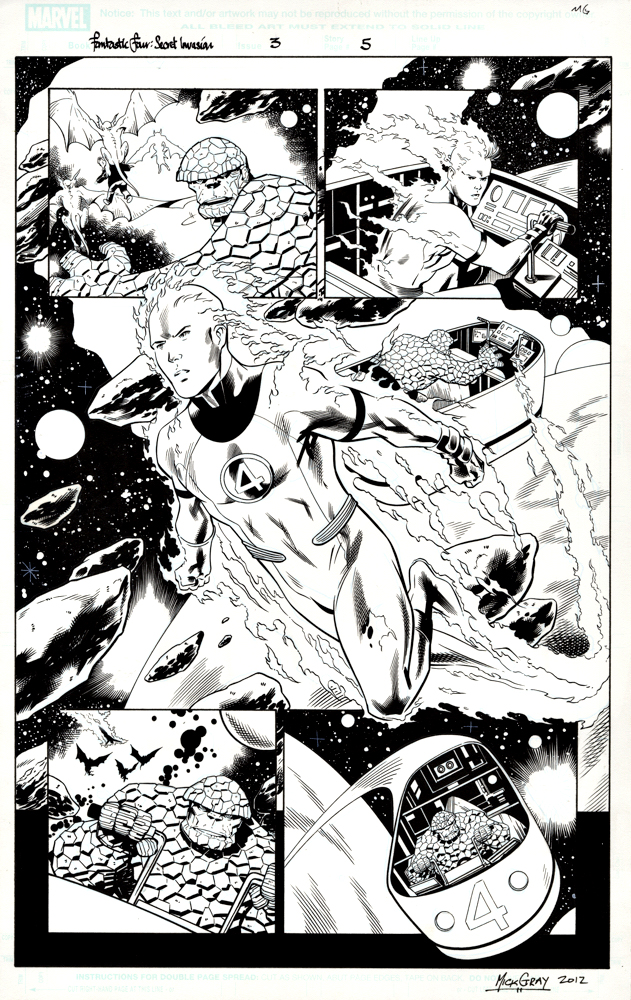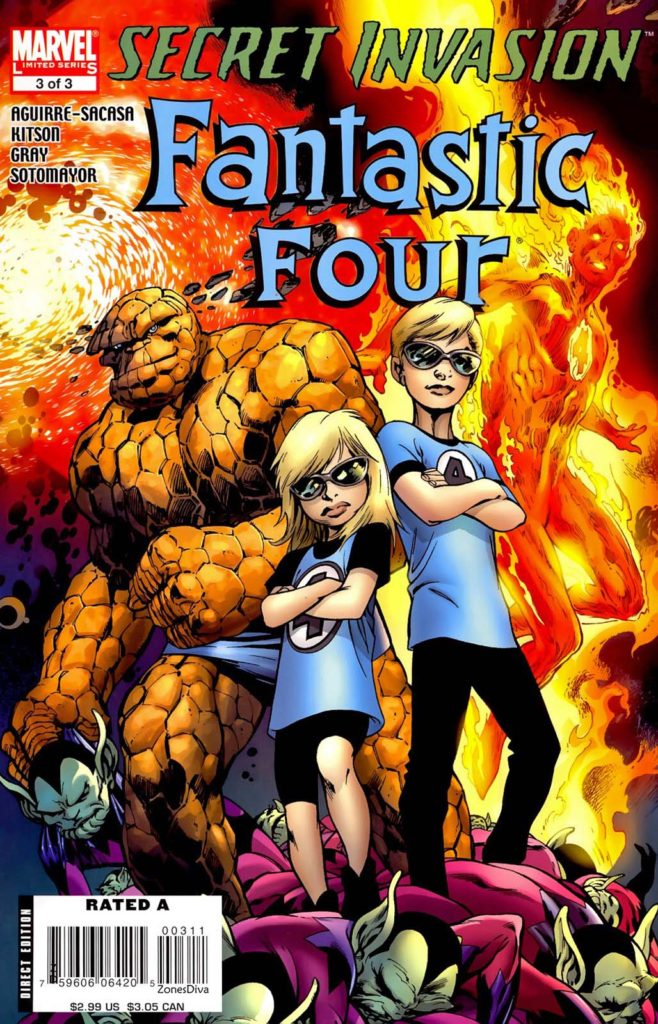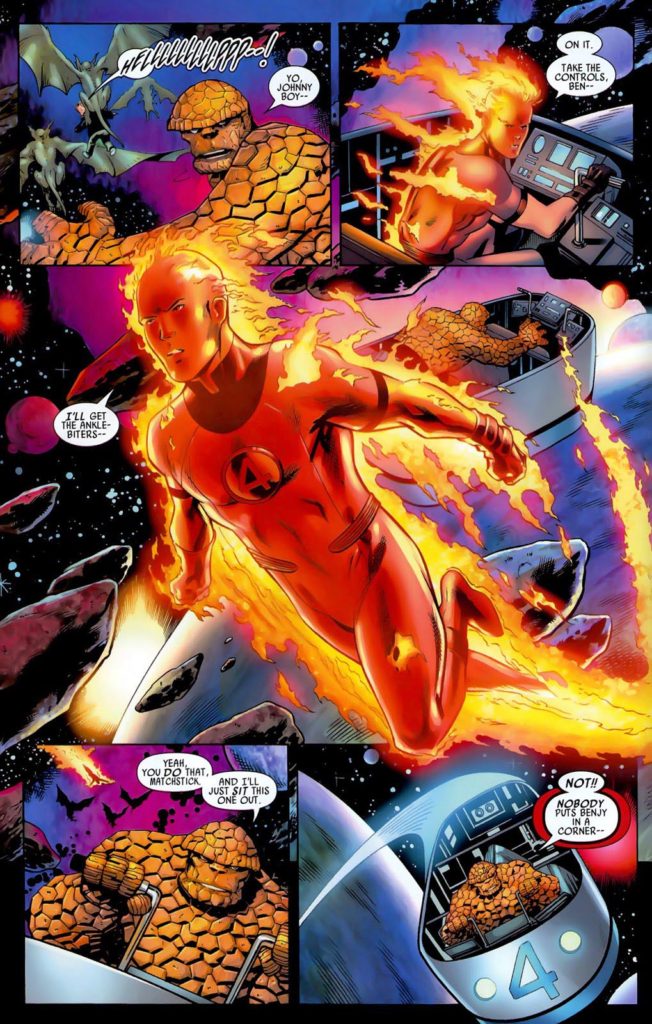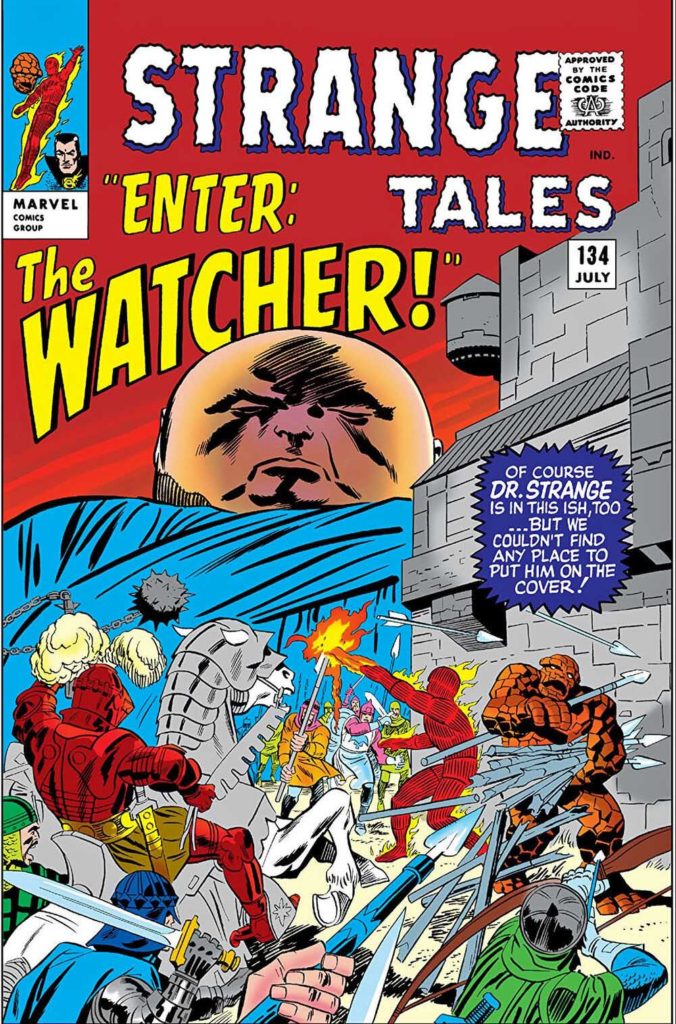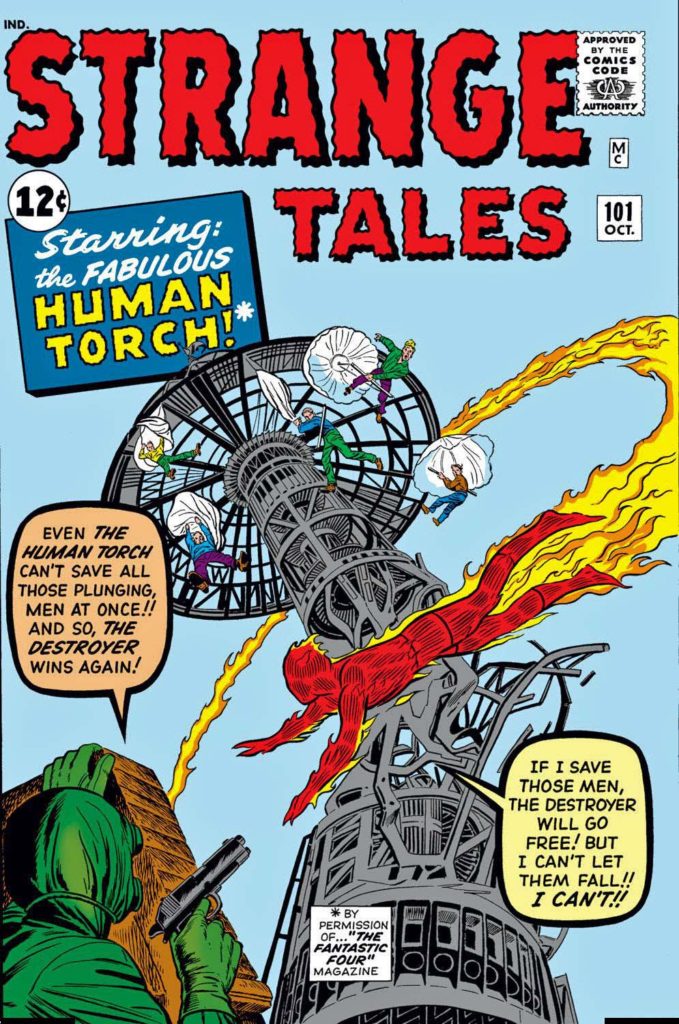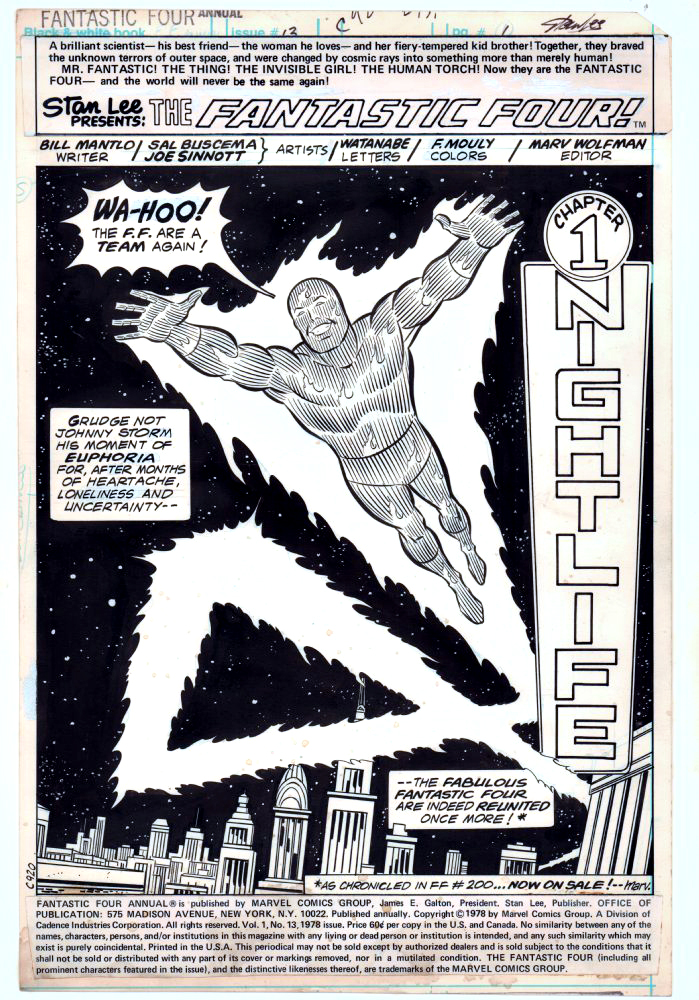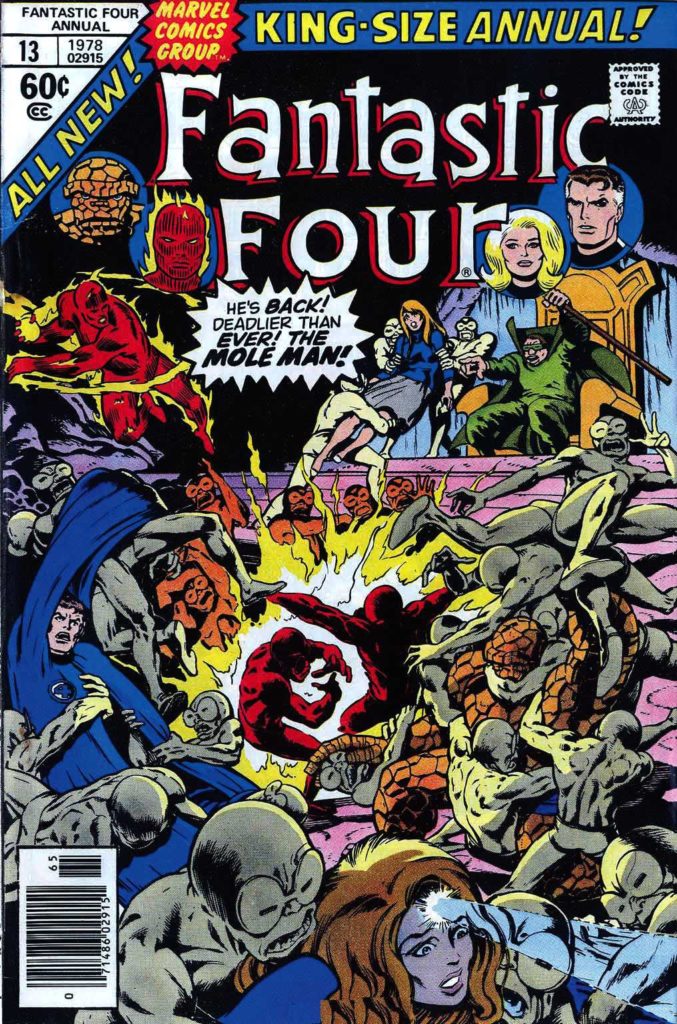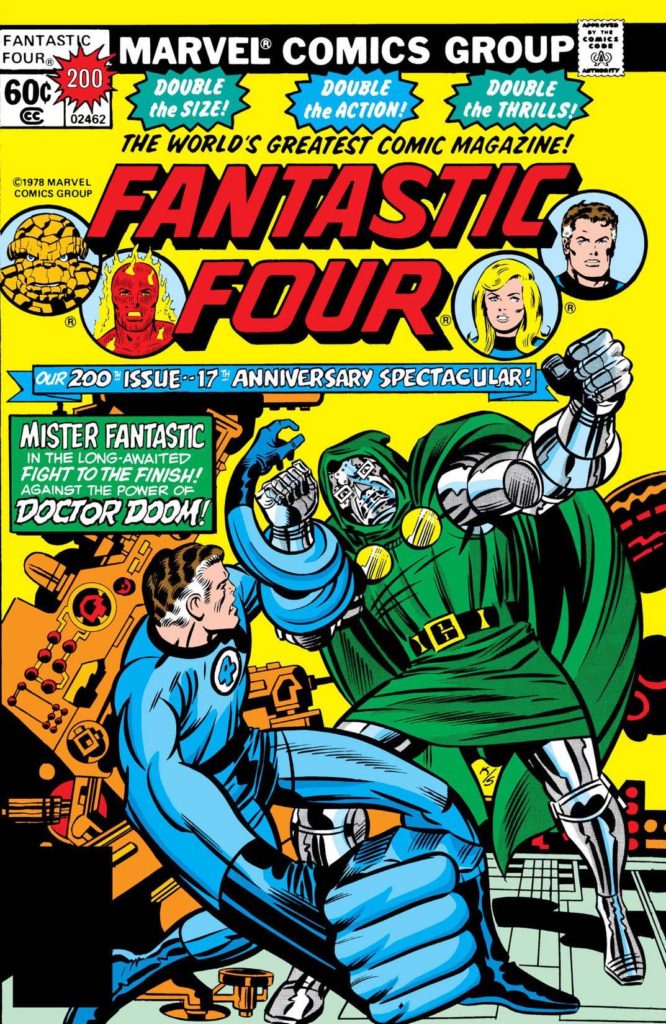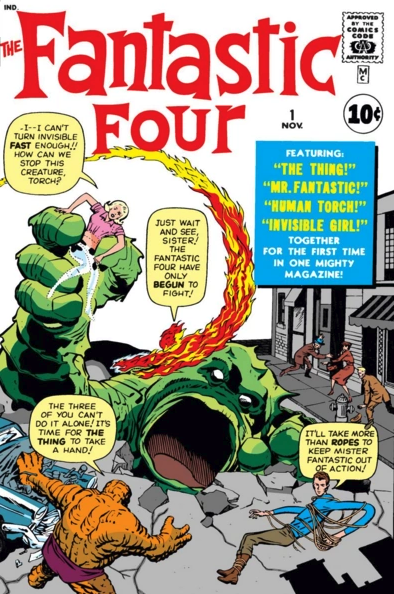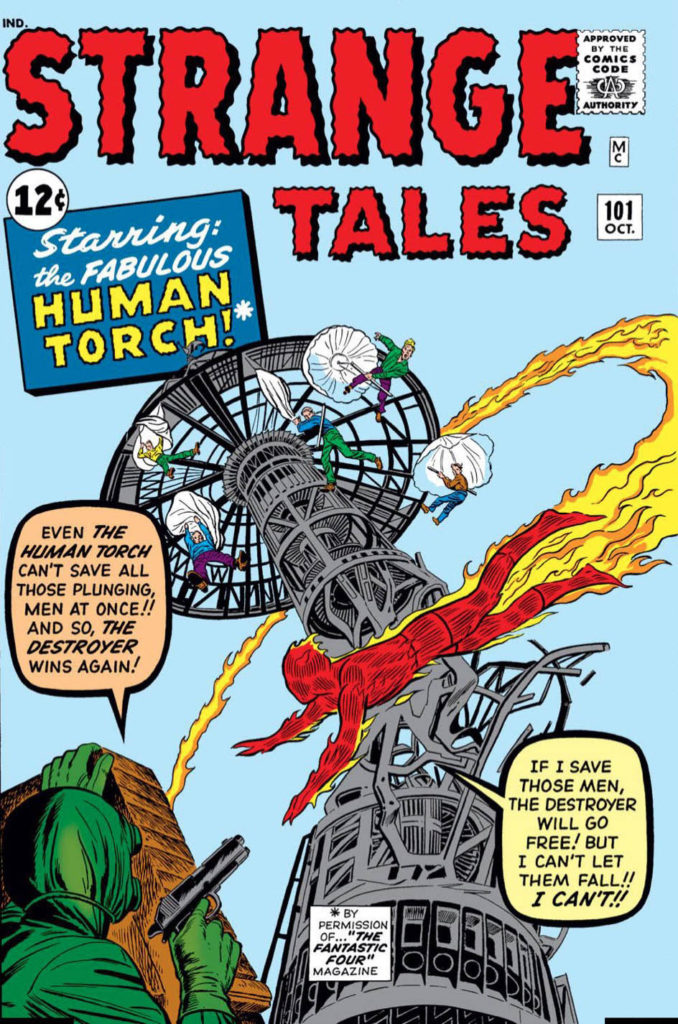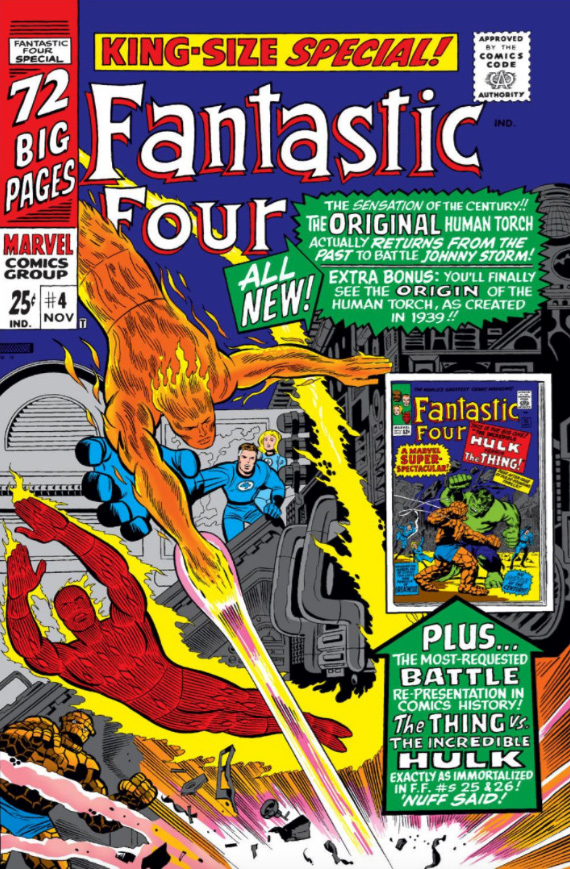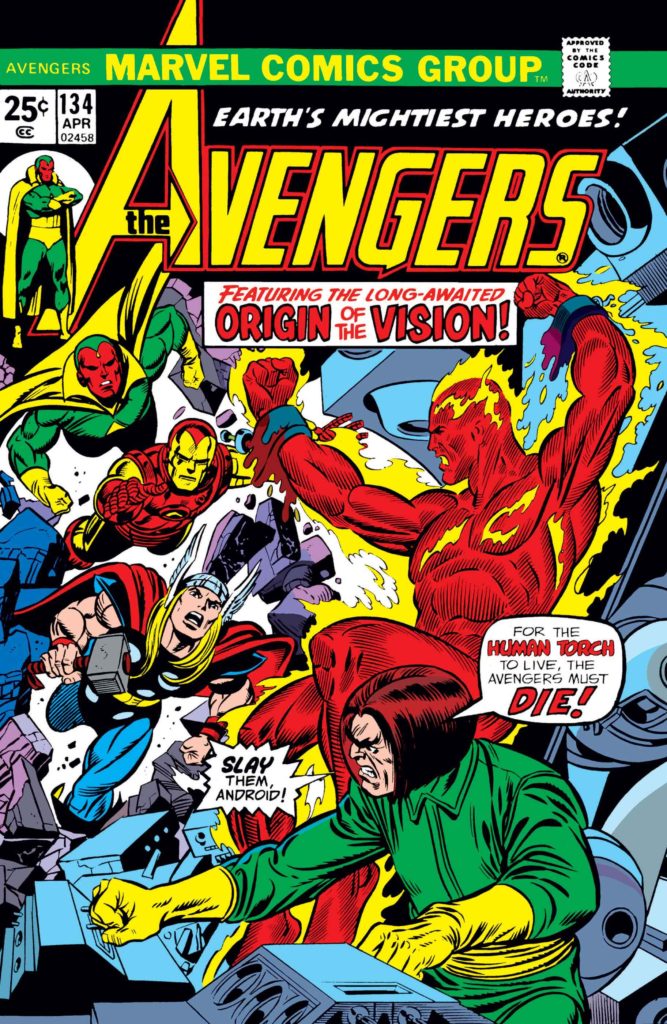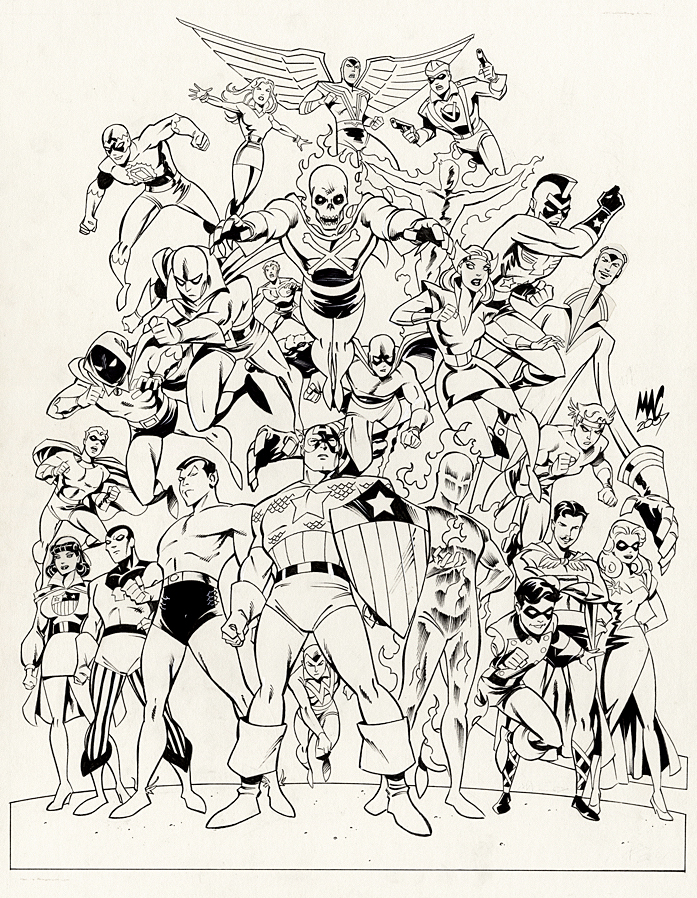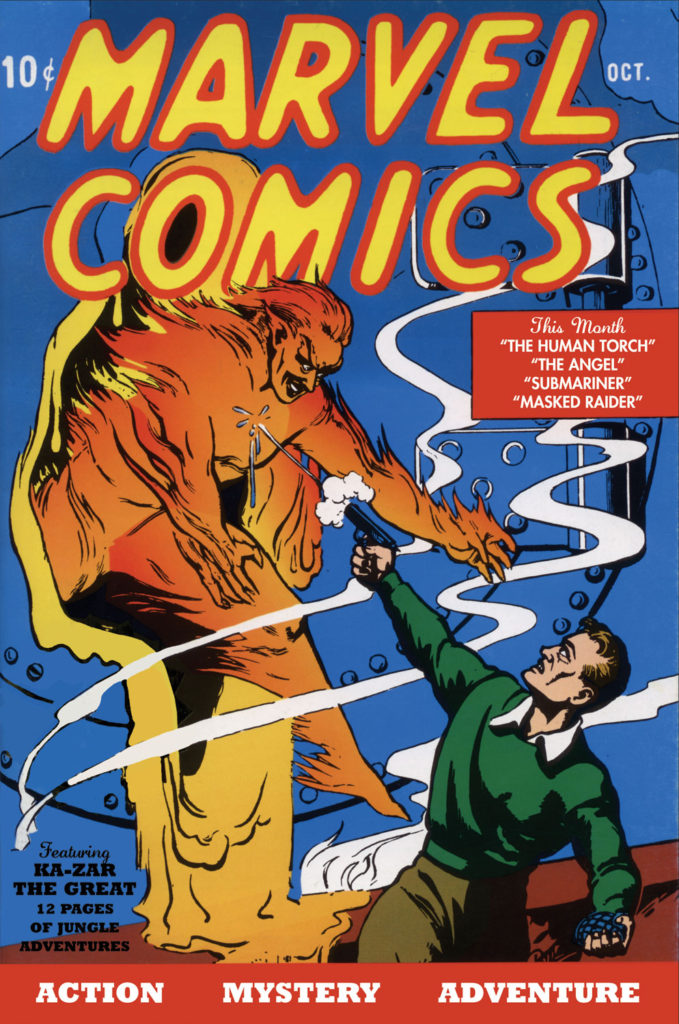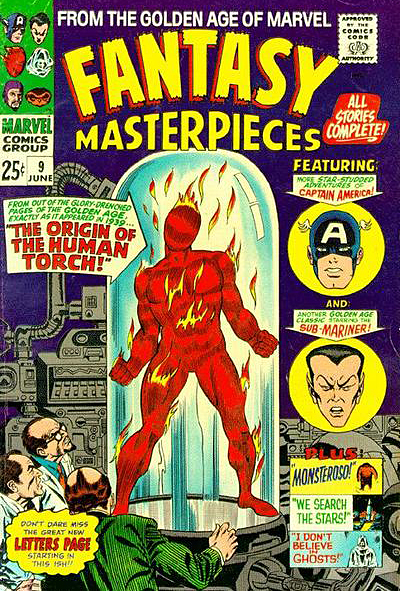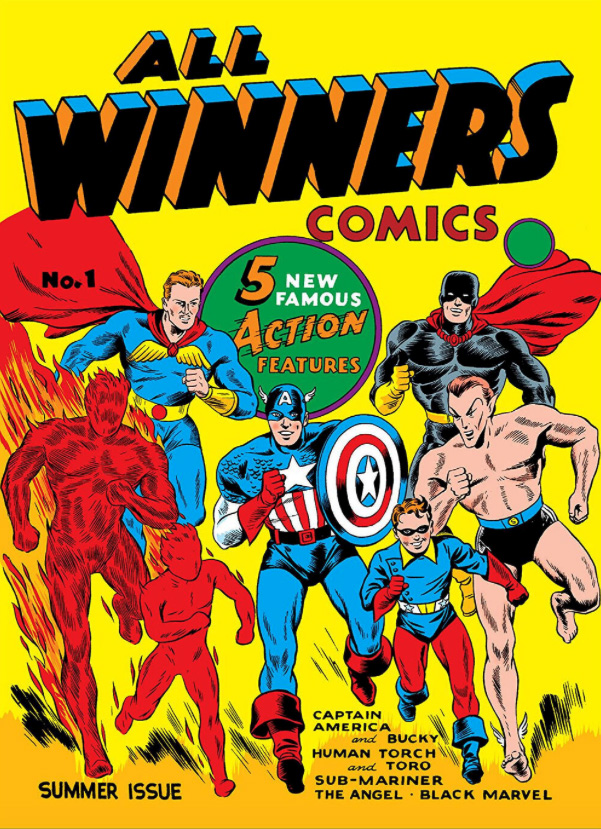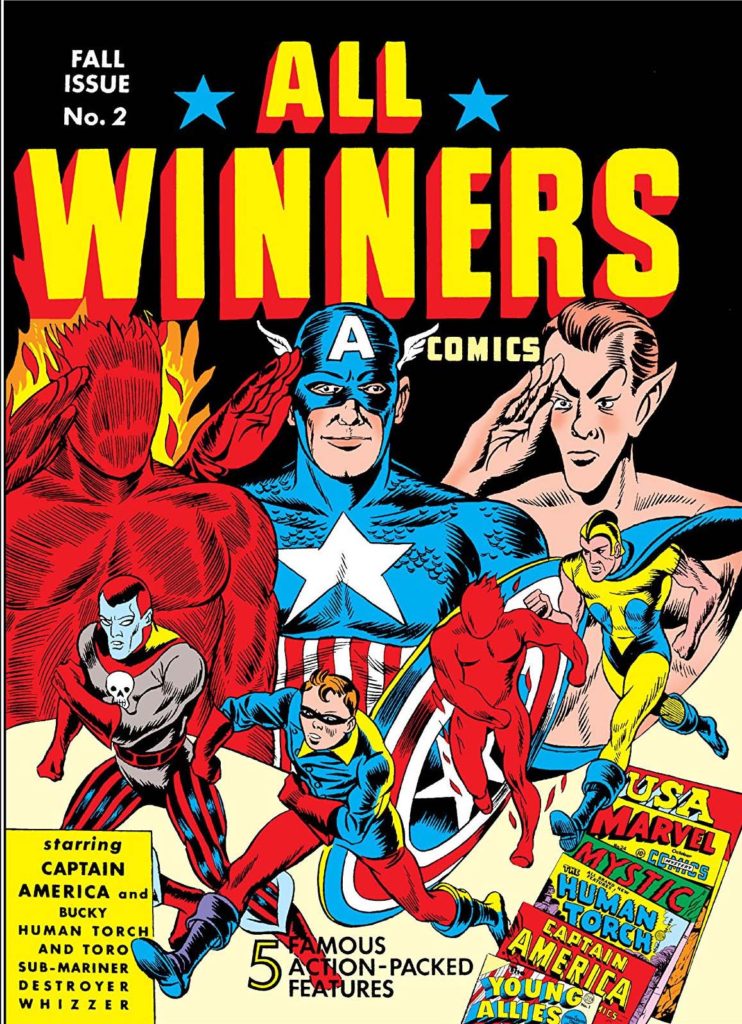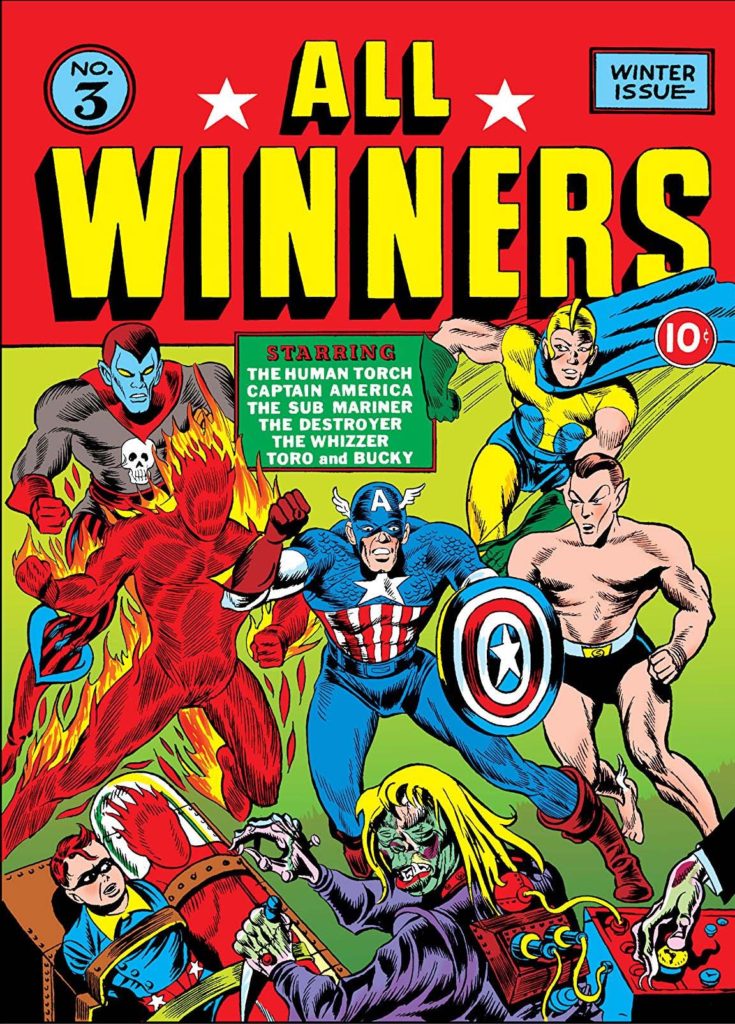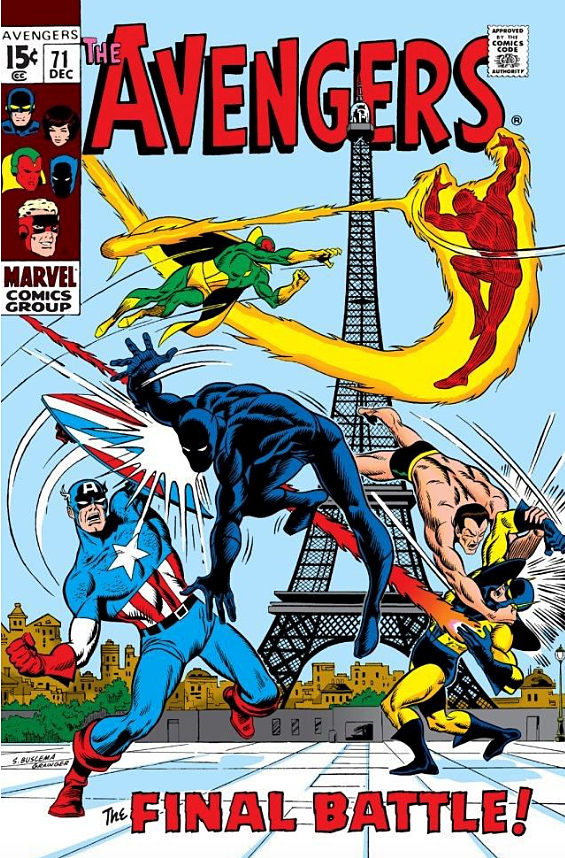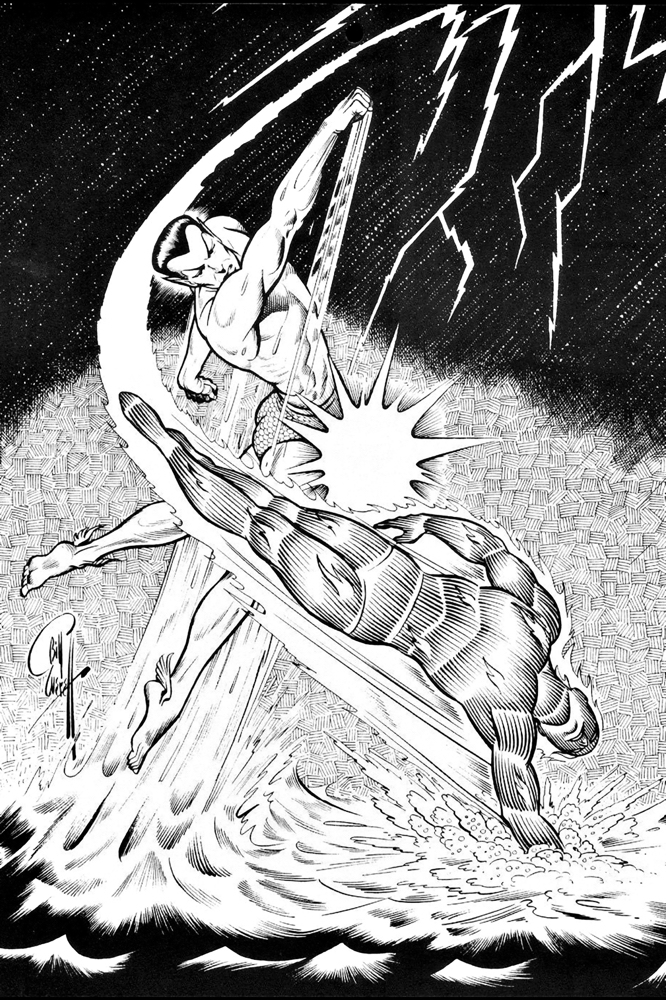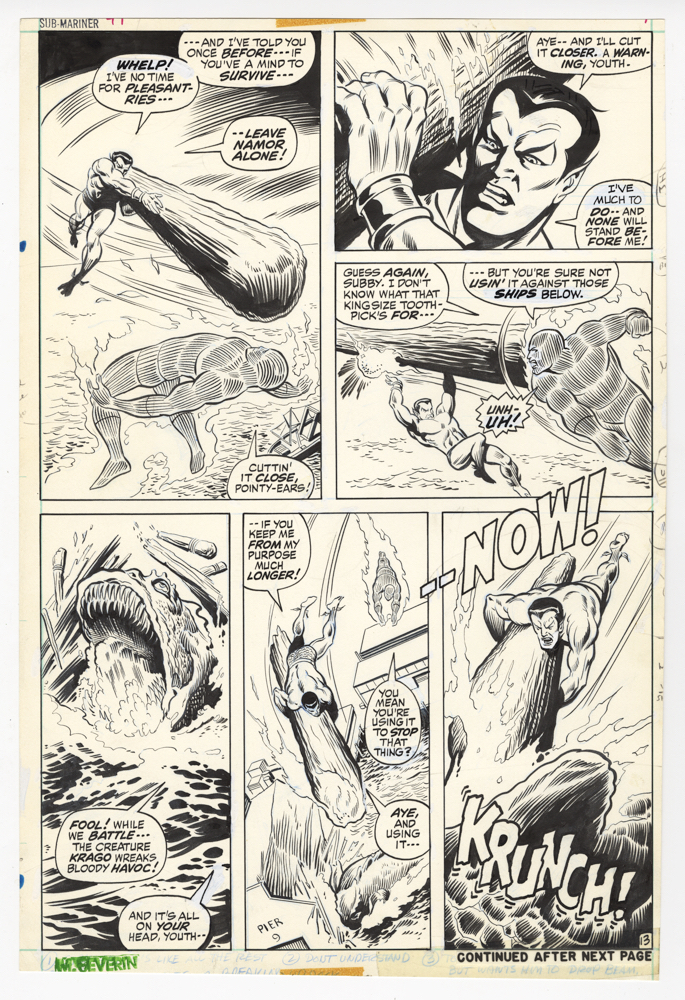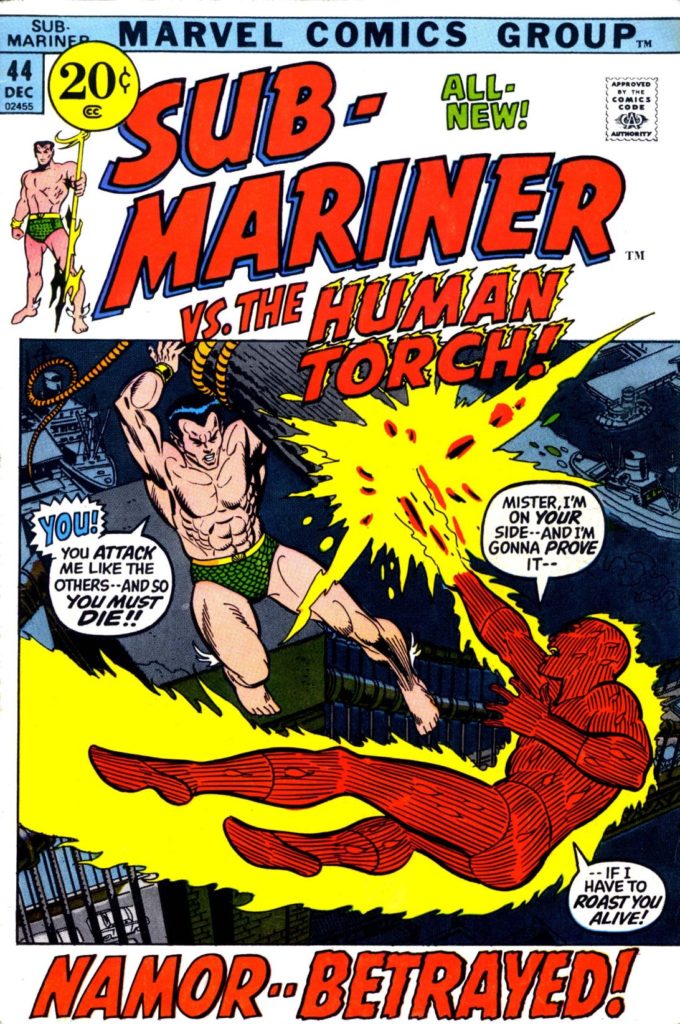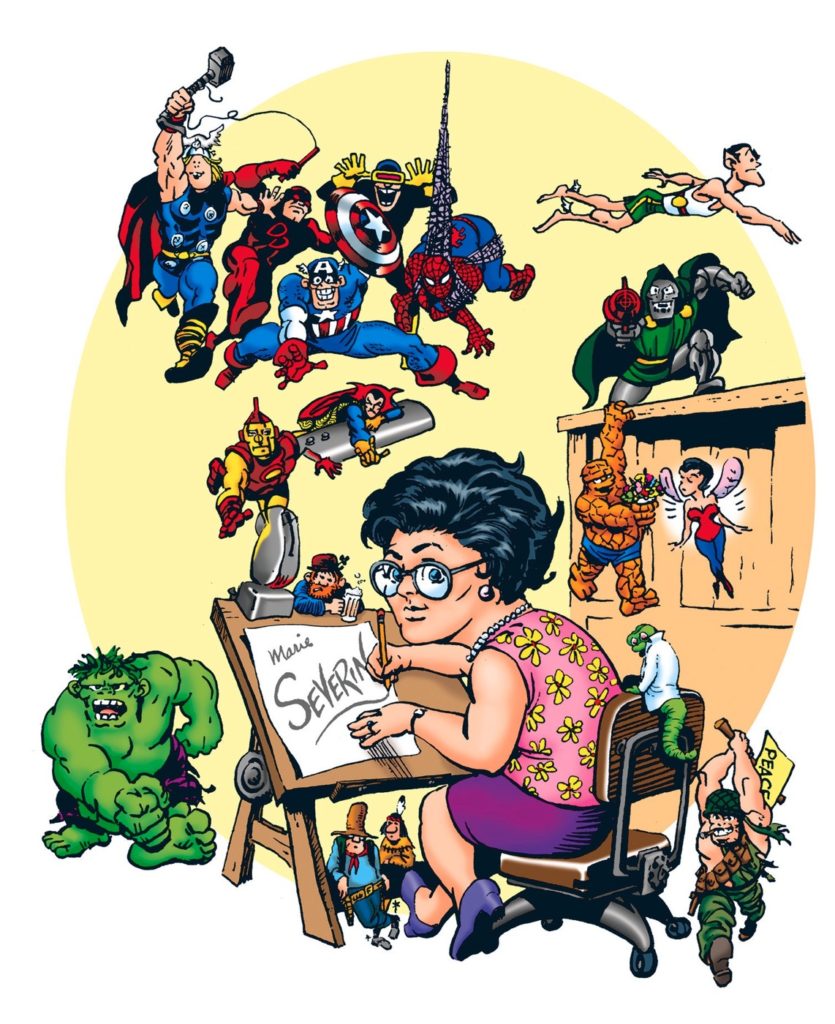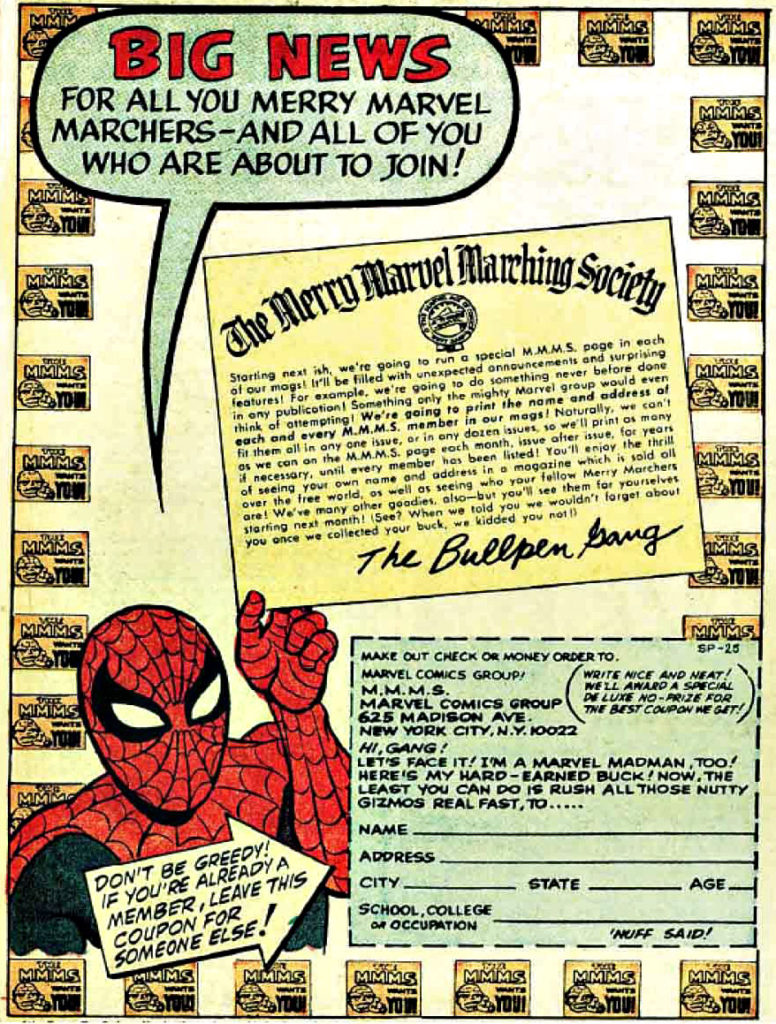Barry Kitson — Negative Space
Secret Invasion: Fantastic Four #3, September, 2008
We close out our second celebration of the 60th anniversary of the Fantastic Four with a quick visit to the Negative Zone.
The Negative Zone, like so many of Jack ad Stan’s creations, endures. I’m sure one version or another will figure into the MCU when The FF finally receives the proper cinematic respect the team deserves.
In the meantime, we have the talented Barry Kitson, and the equally talented Mick Gray, delivering a dynamic and splashy page of Johnny Storm bursting into flames and out of the Fantasti-Car, leaving Ben Grimm unhappily behind. (With a cute piece of dialogue to showcase his frustration, as seen in the published page below.)
It’s a terrific piece of art, and if I have any beef with it all, it’s in the published version, because, after coloring, Johnny appears to have a tight crew cut or no hair at all when he bursts into flame. (And stays that way.)
Johnny Storm without his blonde locks? Even on fire? Blasphemy, I say.

